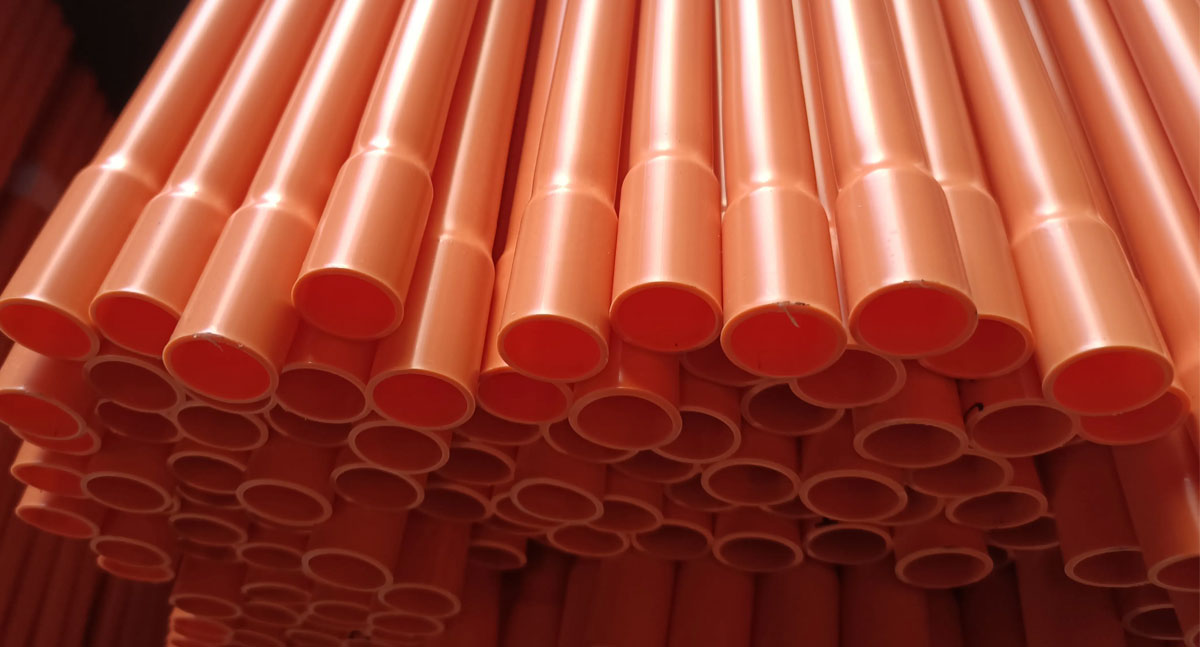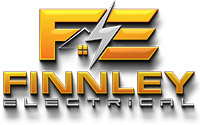Electrical conduit is a vital component in the building and construction process that serves to protect, organise and route electrical wiring. This protective tube can be crafted from metal, plastic, fibre or even fired clay – though rigid varieties are generally most popular for their durability benefits. There are occasions where flexible conduits should be considered given their convenience when navigating tight spaces. We will discuss different uses for electrical conduit and why you might need to it for your next project.
Common Electrical Conduit Types
The type of conduit you choose will be dependent upon the construction task at hand. Electrical conduit comes in a variety of sizes and materials, so it’s important to select one that meets your needs. Here are some common types of electrical conduits:
- Rigid metal conduit (RMC): This is the most popular form of metal conduit used in electrical wiring. It comes in galvanized steel and stainless steel varieties and is resistant to mechanical damage.
- Electrical metallic tubing (EMT): This thin-walled conduit is lightweight and easy to install, meaning it’s great for tight spaces where RMC isn’t practical.
- Polyvinyl chloride conduit (PVC): The most common type of electrical conduit used in Australia. PVC is strong, durable and flame-retardant, making it suitable for many indoor applications. It’s also very affordable and simple to install.
- Flexible metal conduit (FMC): This type of conduit is great for projects where you need to make tight bends or navigate around obstacles without the need for additional fittings.
- Fiberglass conduit (FGC): This conduit is ideal for harsh or hazardous environments. It’s also fire-resistant and resistant to corrosion, making it a popular choice in critical applications.
- Galvanized rigid conduit (GRC): Strong, durable and provides superior protection from mechanical damage. When installed properly, it can help to ensure that your electrical wiring is safe and secure for years to come.
- Intermediate metal conduit (IMC): is similar to RMC, but with thinner walls. It’s lightweight and easy to install, making it an ideal choice for outdoor applications where extra protection from the elements is needed.
- Aluminum: Aluminum is a lightweight yet strong conduit that’s resistant to corrosion and provides superior protection from moisture. It’s perfect for outdoor applications where extra protection from the elements is needed.
- Reinforced thermosetting resin conduit (RTRC): This type of conduit is constructed from an inner core of glass fibers and a reinforced thermosetting resin. It’s very durable and resistant to corrosion, making it ideal for applications where extra protection from the elements is needed.
- Rigid nonmetallic conduit (RNC): This type of conduit is constructed from plastic or fiberglass and is great for a variety of indoor applications. It’s lightweight, flexible and easy to install, making it an ideal option when you don’t have access to more traditional types of conduits.
Where is electrical conduit required?
Whether it’s residential or commercial, electrical conduit is often required when installing new wiring. It should be used in any area where the wires must pass through walls, ceilings or floors, and should be installed according to local building codes and Australian Standards. Additionally, if you’re running exposed cables outside your home or business, then you may need to use conduit to protect the wires from the elements.
Within Australia, the AS/NZS 2053.1:2001 Standard, called Conduits and fittings for electrical installations – outlines the requirements for conduits utilised as part of electrical installations.
How deep is electrical conduit in Australia?
Within Australia, underground cable should be laid at a minimum depot of 600mm below a present or future footway surface (whichever is in fact lower). The underground service alignment should be parallel and to a distance of not less than 400mm, and not more than 900mm from the property line.
Do electrical wires in walls need conduit?
In most cases, yes. Conduit is required when running electrical wires through walls in order to protect them from damage and fire hazards. Additionally, it’s also important to use conduit when running cables outdoors, as they need extra protection from the elements.
What is the purpose of conduit in electrical wiring?
Using an electrical conduit has several advantages. It protects the wires by providing a sturdy, enclosed tube that prevents them from being damaged or exposed to hazardous conditions. This also reduces the risk of shocks and fires due to bad wiring. Electrical conduits can also be used to route multiple wires in the same space, helping to keep them organised and reduce clutter. Additionally, they can provide a nice aesthetic touch to any project as they are available in numerous colours and sizes. Furthermore, conduit is easy to install and can be cut or bent into shape with minimal effort, making it great for DIY projects.
Finally, using electrical conduit can save you money in the long run, as it offers superior longevity and durability compared to other wiring options. This means you don’t have to worry about replacing wires or conducting repairs anytime soon.
Does 240v wiring need to be in a conduit?
When running individual 240v wires, they must be placed in conduit for the entire length of the run. Non-metallic conduit is preferred due to its easier installation compared to rigid or EMT. We suggest using a larger size than required by code as pulling out wires will become considerably easier this way.
To surpass 360 degrees of turns, you must place in a pull box somewhere along the wiring pathways. This enables you to reduce the combined number of curves to no more than or equal to 360 degrees, which complies with most cabling regulations. It must remain accessible perpetually, not necessarily “readily accesible”, but permanently accessible.
Advantages of Electrical Conduit
There are a number of reasons why electrical conduit should be used in all kinds of electrical wiring projects. Here are some of the advantages:
- Provide protection for wires and cables: Electrical conduit acts as a protective housing that prevents wire insulation from being damaged or worn down. It also safeguards against water, dust and other potential hazards related to the environment in which it’s installed.
- Easy to install: Electrical conduit is designed to be easy to install, with minimal tools and materials required. This makes it cost-effective and ensures that installation can be completed quickly.
- Conformity with electrical codes: The use of electrical conduit will ensure compliance with local building codes and other regulations related to wiring. This is especially important when it comes to safety.
- Durability and longevity: Most types of electrical conduit are designed for long-term use. This means that you won’t need to replace it for years, making it a great investment for any project.
Disadvantages of Electrical Conduit
There are a few drawbacks to using electrical conduit, including:
- Cost: Electrical conduit can be more expensive than other types of wiring methods. This is especially true for metal conduit, which may require additional components to install.
- Size and shape limitations: Rigid conduit is limited in its shape and size, making it less suitable for tight spaces. This can make it difficult to install in locations with limited space or complex wiring needs.
- Prone to mechanical damage: Rigid conduit can be prone to denting and other types of m
- Weight: Metal conduit is heavier than other types, making it more difficult to install in certain locations. Additionally, the weight of the conduit can put extra stress on supporting structures.
- Susceptible to corrosion: Metallic conduit is especially susceptible to corrosion, which can weaken it and reduce its life span. This means that you need to pay extra attention to maintaining it in corrosive environments.
In conclusion, electrical conduit is an important tool in the construction industry that provides protection, organisation and routing of electrical wiring. It comes in a variety of types and sizes, making it suitable for all sorts of tasks. With its ease of installation and durability, there are numerous benefits to using electrical conduit for your next project. If you have any questions please don’t hesitate to contact Finnley Electrical – we’d be glad to help.
Electrical Conduit Sizes
Electrical conduit is available in a variety of sizes, and the selection of the conduit size depends on the specific application and the electrical load that will be carried through the conduit. The size of the conduit is determined by the inside diameter (ID) of the conduit.
The most commonly used sizes of electrical conduit for residential, commercial, and industrial applications in America are:
- 1/2 inch
- 3/4 inch
- 1 inch
- 1 1/4 inch
- 1 1/2 inch
- 2 inch
- 2 1/2 inch
- 3 inch
- 3 1/2 inch
- 4 inch
Within Australia, standard sizes include:
- 20mm
- 25mm
- 32mm
- 40mm
- 50mm
- 63mm
- 80mm
- 100mm
- 125mm
- 150mm
- 200mm
The size of the conduit also determines the maximum number of wires that can be safely installed in the conduit. Within America, the National Electrical Code (NEC) provides guidelines for the maximum number of wires that can be installed in each conduit size.
It is important to select the appropriate conduit size for the specific application to ensure that the electrical system operates safely and efficiently. Installing a conduit that is too small can lead to overheating of the wires, while installing a conduit that is too large can result in increased costs and unnecessary space requirements.
In addition to selecting the appropriate conduit size, it is also important to consider the type of conduit material, the location of the conduit, and any environmental hazards that may affect the electrical system.


